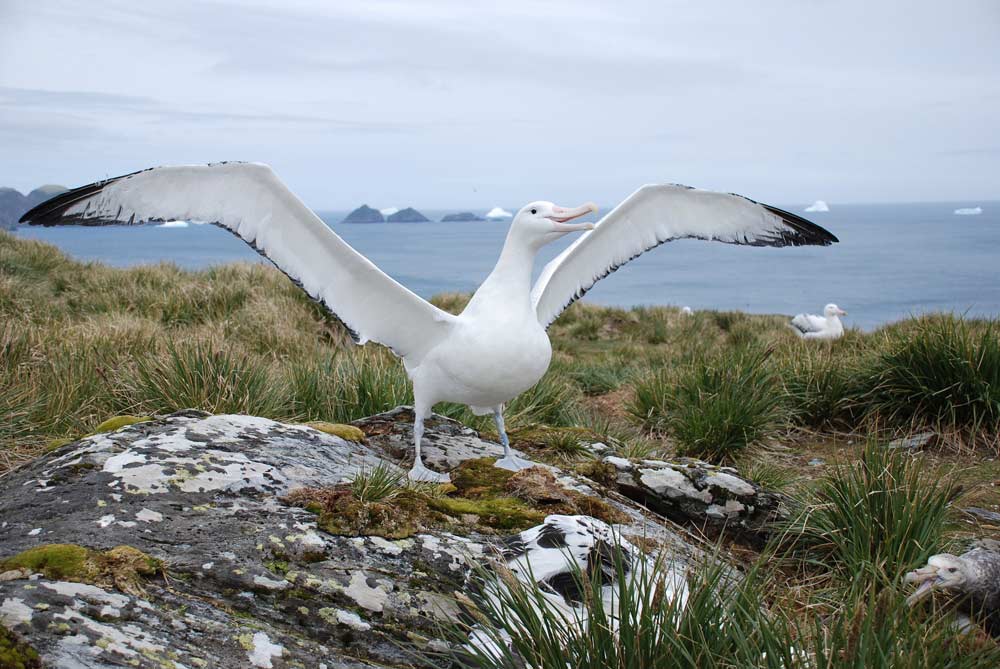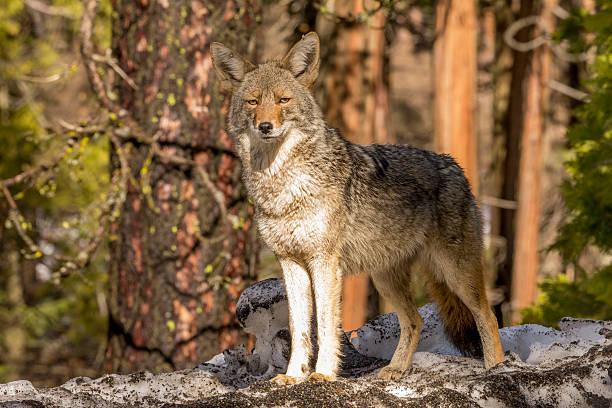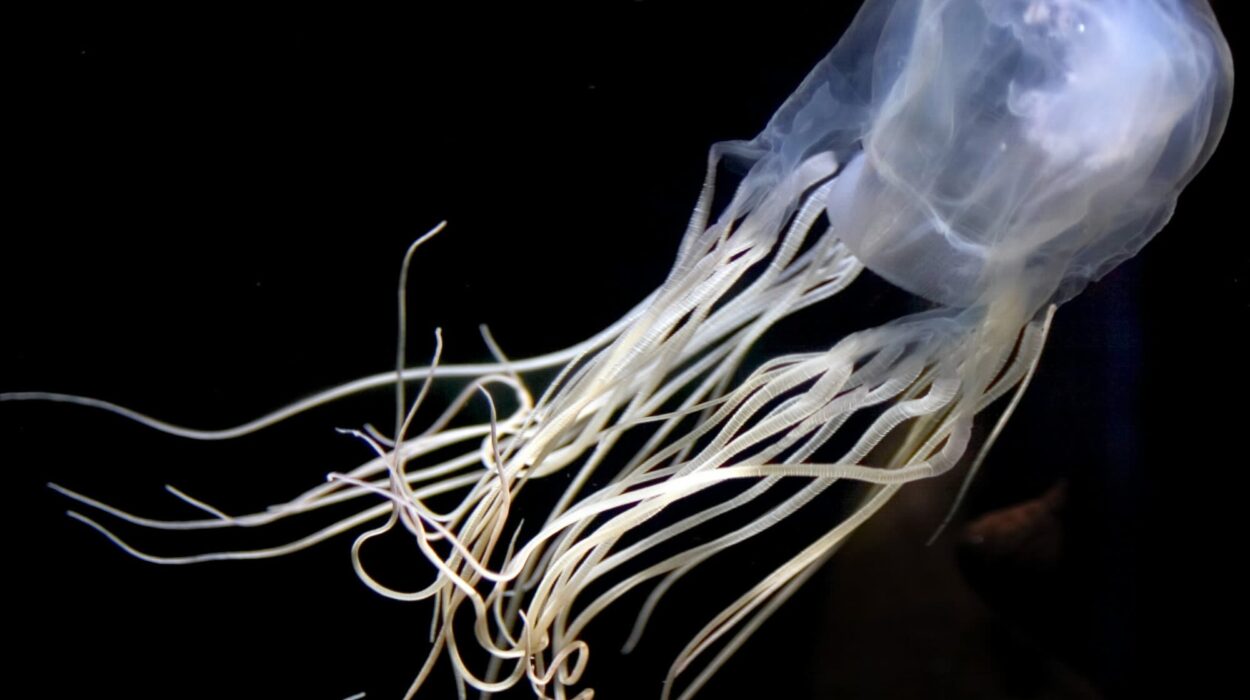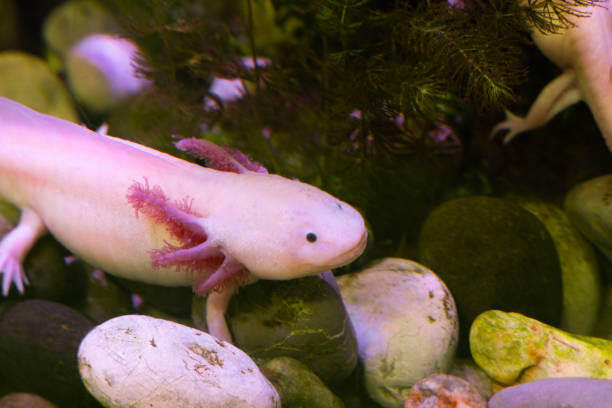As winter approaches and the days grow shorter, nature undergoes a profound transformation. Trees shed their leaves, temperatures drop, and the landscape becomes still and quiet. Amid this seasonal shift, some animals vanish from sight entirely. Bears retreat into dens, frogs bury themselves in mud, and bats disappear into caves. These animals enter a remarkable state known as hibernation—a survival strategy that allows them to “sleep” through the harshest months of the year when food is scarce and conditions are too extreme for normal activity.
While it may appear as though these creatures are simply sleeping, hibernation is far more complex than ordinary rest. It is a finely tuned physiological adaptation that allows certain animals to conserve energy and endure periods of cold and famine. This process has evolved independently across many different species, demonstrating its extraordinary importance in the story of life on Earth. To understand why some animals sleep all winter, we must explore the biological, environmental, and evolutionary forces that have shaped this fascinating phenomenon.
The Challenge of Winter Survival
Winter poses one of the greatest challenges to animal survival, particularly in temperate and polar regions. As temperatures drop, the availability of food diminishes dramatically. Plants cease growing, insects disappear, and many prey species migrate or become inactive. For animals that depend on these resources, the winter months can be a time of starvation and extreme stress.
Small animals, in particular, face a serious energy crisis. Because they have a high surface-area-to-volume ratio, they lose heat rapidly and must eat constantly to maintain body temperature. But when food is scarce, maintaining normal metabolism becomes impossible. In such conditions, many species have evolved strategies to minimize energy expenditure, one of the most successful being hibernation.
Rather than fighting the season’s hardships, these animals enter a dormant state that allows them to slow down their bodily functions to a fraction of normal levels. By doing so, they can “wait out” the winter months until conditions improve.
What Is Hibernation?
Hibernation is not merely extended sleep; it is a complex physiological state characterized by a significant reduction in metabolic rate, body temperature, heart rate, and breathing. During hibernation, an animal’s body essentially “shuts down” most non-essential processes to conserve energy.
In true hibernators, body temperature can drop near the surrounding environmental temperature. For example, ground squirrels may lower their body temperature from around 37°C to just a few degrees above freezing. Their heart rate may fall from hundreds of beats per minute to fewer than ten, and their respiration slows to only a few breaths per minute.
This extreme metabolic depression allows the animal to survive on limited energy reserves, often relying solely on stored body fat. The duration and depth of hibernation vary among species and environments, but the underlying principle is the same—reduce energy demands to a minimum until favorable conditions return.
The Science of Metabolic Slowdown
Hibernation is a controlled process orchestrated by the animal’s brain and hormones. It begins when environmental cues such as shorter daylight hours, lower temperatures, and declining food availability signal the approach of winter. These changes trigger the hypothalamus, a region in the brain responsible for regulating body temperature and metabolism.
Hormones such as melatonin and insulin play key roles in preparing the body for hibernation. Melatonin levels increase with longer nights, signaling the need to reduce activity. Meanwhile, metabolic hormones adjust to favor fat storage over immediate energy use. The animal’s body begins accumulating fat—particularly brown adipose tissue, which is highly efficient at generating heat during arousal from hibernation.
As hibernation begins, the animal’s metabolism switches into a low-energy mode. The concentration of oxygen in tissues decreases, enzymatic reactions slow, and cells enter a state of dormancy. Yet, the organism remains alive and responsive to certain stimuli, capable of arousing when conditions require it.
How Animals Prepare for Winter
Before entering hibernation, animals undergo a preparatory phase known as hyperphagia, during which they eat intensively to build fat reserves. This fat serves as the primary energy source throughout the winter. In species like bears, this pre-hibernation feeding period can last several weeks and results in the accumulation of large stores of subcutaneous and visceral fat.
In small mammals like chipmunks or hedgehogs, the strategy differs slightly. Some species store not only fat but also caches of food in their burrows, which they may consume during brief awakenings. Amphibians and reptiles, being ectothermic, rely more on finding suitable shelters that protect them from freezing temperatures, such as burrowing underground or sinking into the mud at the bottom of ponds.
This preparation is crucial, as failure to accumulate enough energy reserves can mean death before spring returns.
True Hibernation vs. Torpor and Winter Sleep
Not all animals that “sleep” in winter are true hibernators. Scientists distinguish between hibernation, torpor, and winter sleep based on the depth and duration of the metabolic slowdown.
In true hibernators, like ground squirrels and certain bats, the body temperature drops dramatically, and the metabolic rate can fall to as little as 1% of normal. These animals enter multi-day or multi-week cycles of deep dormancy, occasionally waking briefly to maintain body functions or eliminate waste before returning to hibernation.
In contrast, animals such as bears undergo a state often called winter sleep or denning. Their body temperature decreases only slightly, and they can awaken more easily. Bears remain in their dens for months, relying on fat reserves but not experiencing the same extreme metabolic suppression as small hibernators.
Another variation, torpor, is a short-term state of lowered metabolism lasting from a few hours to a few days. Many small birds and mammals, such as hummingbirds and mice, enter torpor overnight or during particularly cold days to conserve energy. Though less extreme, torpor operates on the same biological principle as hibernation.
The Role of Fat and Energy Reserves
Fat is the lifeline of hibernating animals. It is both their energy source and their means of insulation. However, not all fat is equal. Hibernators possess two main types: white adipose tissue (WAT) and brown adipose tissue (BAT).
White fat serves as the main energy reservoir. It stores calories in the form of triglycerides, which can be broken down into fatty acids to fuel the body during dormancy. Brown fat, on the other hand, is specialized for heat production. It contains numerous mitochondria—the cell’s powerhouses—which can rapidly generate heat through a process called non-shivering thermogenesis.
This thermogenic capability is vital during arousal from hibernation. When an animal begins to wake up, it activates brown fat to raise its body temperature before its muscles regain normal function. Without brown fat, many hibernators would be unable to rewarm themselves efficiently and could die before fully awakening.
How Hibernation Differs Among Species
Hibernation has evolved independently across diverse animal groups, resulting in a wide range of adaptations. In mammals, hibernation is most common among small species such as bats, hedgehogs, dormice, and ground squirrels. Their small body size and high metabolic rate make them particularly vulnerable to food shortages, so hibernation provides a critical survival advantage.
Bears represent a unique case. Despite their size and warm-blooded physiology, they can enter a state of prolonged dormancy without eating, drinking, urinating, or defecating for months. During this time, they recycle metabolic waste into usable proteins, preventing muscle and bone loss—a biological feat that fascinates medical researchers studying human health.
In the insect world, hibernation-like states occur as diapause, a form of developmental arrest triggered by environmental cues. Butterflies, beetles, and bees can enter diapause at different life stages—egg, larva, pupa, or adult—depending on the species.
Amphibians and reptiles, being cold-blooded, do not control their body temperature internally. Instead, they undergo brumation, a cold-induced dormancy similar to hibernation. Frogs, turtles, and snakes become inactive as temperatures drop, often seeking refuge in soil, leaf litter, or underwater mud where temperatures remain stable.
Fish also exhibit slowed metabolism during winter. Some freshwater species settle at the bottom of lakes, where water remains liquid and oxygen levels are sufficient for minimal activity.
The Environmental Cues That Trigger Hibernation
The onset of hibernation is tightly linked to environmental signals. Animals use a combination of cues—day length, temperature, and food availability—to anticipate winter’s arrival.
The shortening of daylight in autumn plays a key role, as it influences the production of melatonin, the hormone that regulates circadian rhythms. This hormonal signal interacts with internal clocks in the brain to alter feeding behavior, metabolism, and fat storage.
Temperature changes also act as direct triggers. As the environment cools, an animal’s thermoregulatory system detects the shift and initiates physiological adjustments for dormancy. Declining food sources reinforce these cues, making hibernation the only viable survival strategy in some ecosystems.
Waking Up from Winter’s Sleep
Emerging from hibernation is a delicate process that requires careful physiological coordination. The animal’s metabolic rate gradually increases, and body temperature rises back to normal levels. Brown fat plays a critical role in generating the necessary heat, while the cardiovascular and respiratory systems accelerate to deliver oxygen to tissues.
This awakening process can take several hours and demands a significant amount of stored energy. For this reason, animals often emerge only when external conditions are favorable. Premature arousal during a cold spell can be fatal, as the energy needed to rewarm the body may deplete fat reserves before spring truly arrives.
Once fully awake, the animal resumes normal activities such as feeding, mating, and caring for offspring. In many species, breeding follows soon after emergence, taking advantage of the abundance of resources in spring.
Hibernation and Evolutionary Adaptation
Hibernation has evolved as a response to the challenges of seasonal environments. It is an adaptive trait that allows animals to survive periods when maintaining normal activity would be energetically impossible.
The diversity of hibernation strategies across the animal kingdom suggests multiple evolutionary origins. Different species have developed unique physiological mechanisms to achieve the same outcome—energy conservation during resource scarcity. For instance, small mammals use deep torpor, while large mammals employ shallower dormancy. Cold-blooded species rely on environmental insulation rather than internal regulation.
This convergence of strategies highlights how natural selection shapes life to meet the demands of survival. In every case, the essence of hibernation is balance—between energy saved and energy needed, between dormancy and awakening, between death and endurance.
The Role of Hibernation in Ecosystems
Hibernation does more than ensure individual survival; it also influences ecosystems. When animals hibernate, they temporarily withdraw from the food web, reducing predation pressure and altering ecological interactions. For example, the hibernation of insect-eating bats affects insect populations, which in turn influences plant pollination and crop cycles.
Moreover, the timing of hibernation and emergence affects the synchronization of ecological events such as flowering, migration, and reproduction. If climate change alters the seasonal timing of temperature and food availability, it can disrupt these delicate relationships, leading to mismatches between hibernators and their environments.
Hibernation and Human Research
Scientists study hibernation not only to understand nature but also to apply its lessons to human medicine. The ability of hibernating animals to drastically lower metabolism, maintain organ integrity, and resist muscle wasting has potential medical applications.
For example, understanding how bears prevent bone loss during dormancy could lead to treatments for osteoporosis. The study of how small mammals suppress immune activity and oxygen consumption without damage offers insights for organ preservation and trauma care. Researchers are even exploring the possibility of inducing a hibernation-like state in humans for long-term space travel or during medical emergencies.
Climate Change and the Future of Hibernation
Global warming poses new challenges for hibernating species. As winters become milder and less predictable, the cues that trigger hibernation may become unreliable. Animals may enter hibernation too late, awaken too early, or fail to build adequate fat reserves.
Additionally, changing snow patterns and temperature fluctuations can disrupt the insulating properties of burrows and dens, exposing animals to fatal cold snaps. Species that rely on a precise balance between temperature and metabolism may struggle to adapt.
For scientists, studying how hibernators respond to these changes is critical for conservation efforts. Protecting their habitats and understanding their adaptive flexibility will be essential for their survival in an increasingly unstable climate.
The Mystery and Majesty of Winter Sleep
Hibernation remains one of nature’s most extraordinary survival strategies. It demonstrates how life can bend, slow, and almost stop, yet never cease entirely. In the silent depths of a bear’s den, the stillness of a frog buried in ice, or the curled dormouse hidden beneath leaves, there lies an exquisite balance between vulnerability and endurance.
When spring finally returns, the awakening of these creatures is a quiet triumph—a testament to the power of adaptation and the resilience of life. The rhythm of hibernation, timed to the turning of the Earth itself, reminds us that even in dormancy, nature is alive with purpose and precision.
Conclusion
Animals that “sleep” through winter do so not out of laziness or mere rest but out of necessity, ingenuity, and evolution. Hibernation is an extraordinary biological response to one of life’s most difficult challenges: surviving when the world grows cold and barren. It allows animals to bridge the gap between abundance and scarcity, between life and death.
Through complex physiological changes, precise timing, and remarkable efficiency, hibernating species have mastered the art of waiting. Their winter sleep is a quiet, calculated act of endurance—an evolutionary masterpiece that has sustained life through countless ice ages and seasonal cycles.
Understanding why some animals sleep all winter reveals not only the mechanics of their survival but also the profound intelligence of nature’s design. In every heartbeat slowed, every breath paused, and every moment of stillness, hibernation tells a story of adaptation, resilience, and the enduring rhythm of life on Earth.






